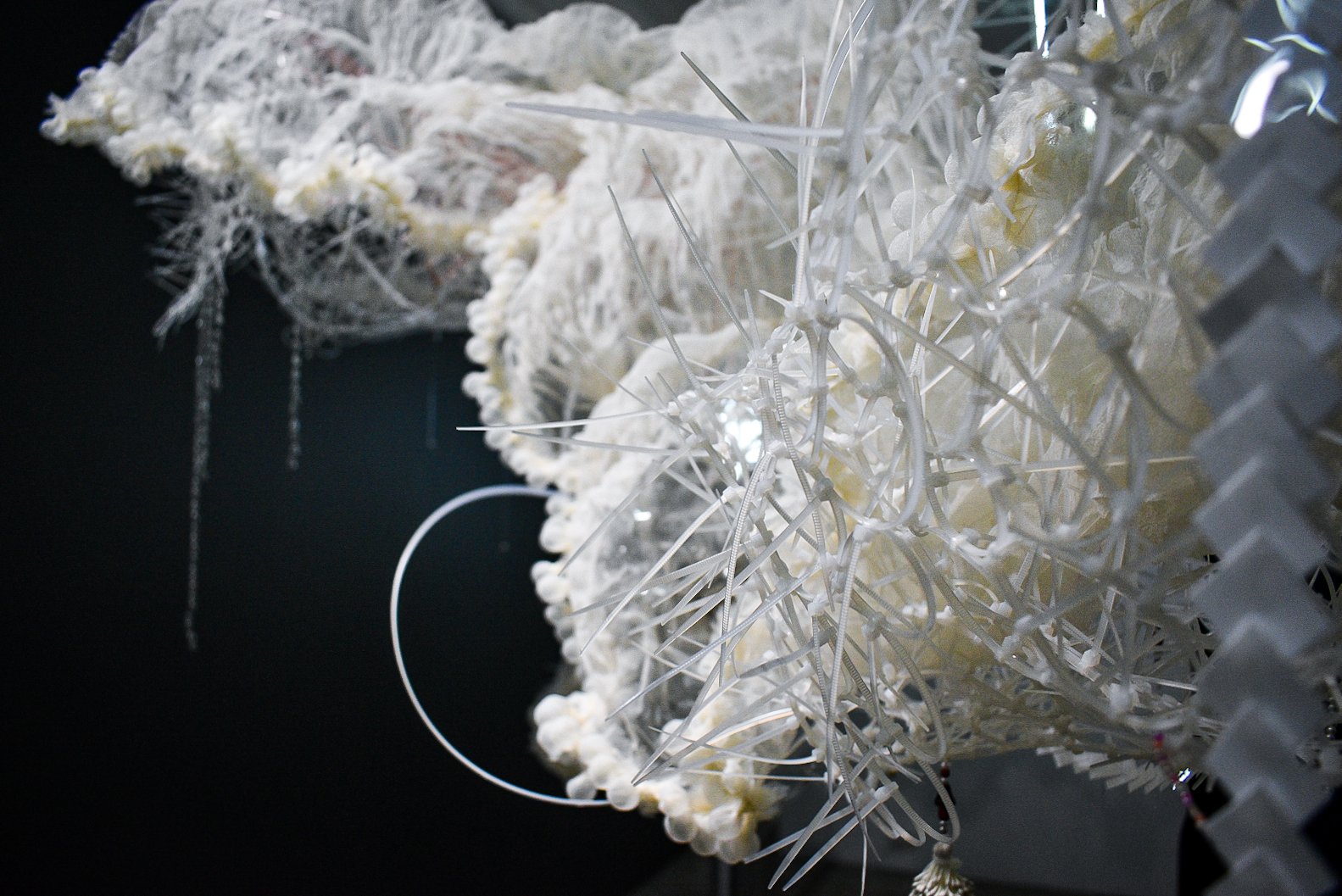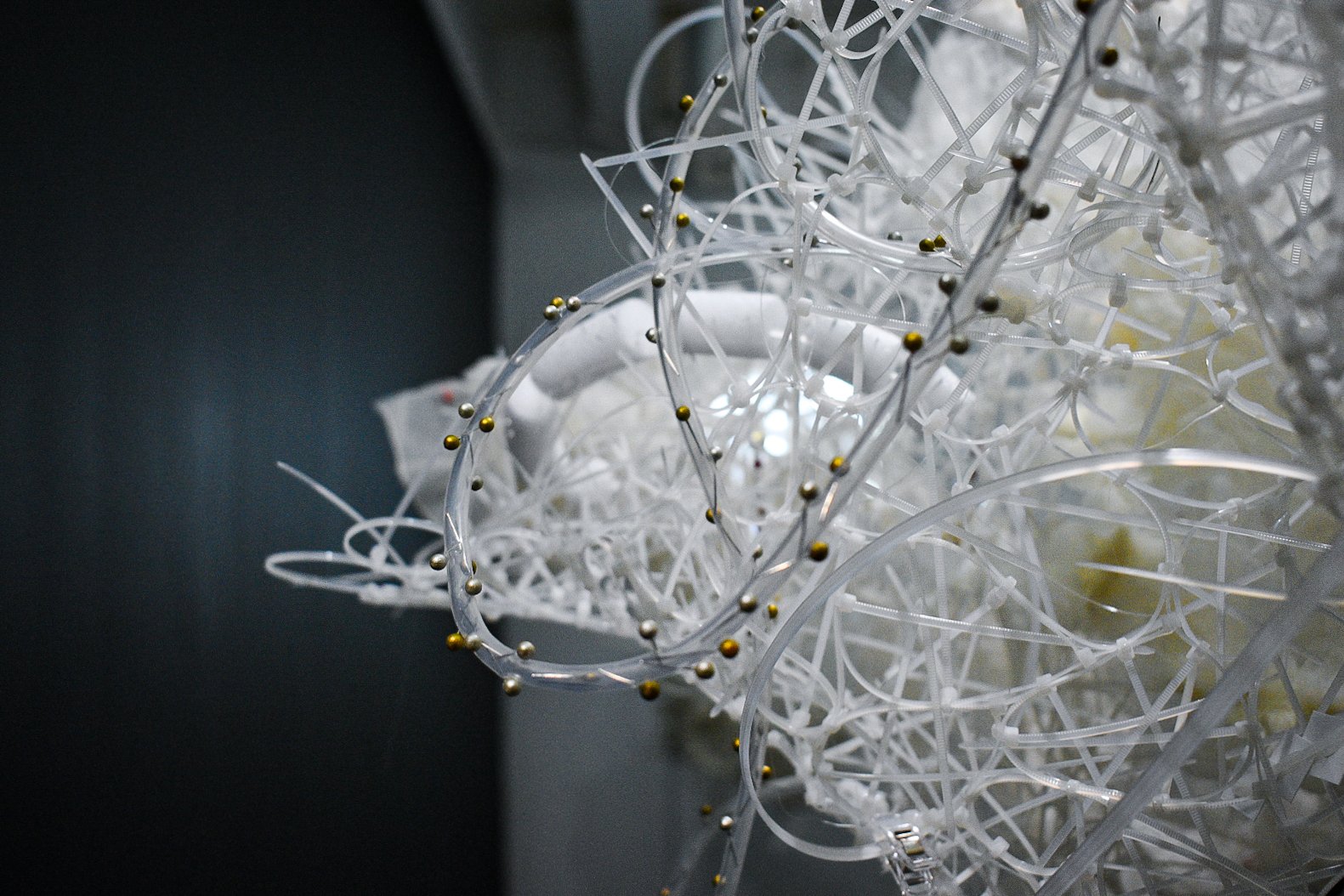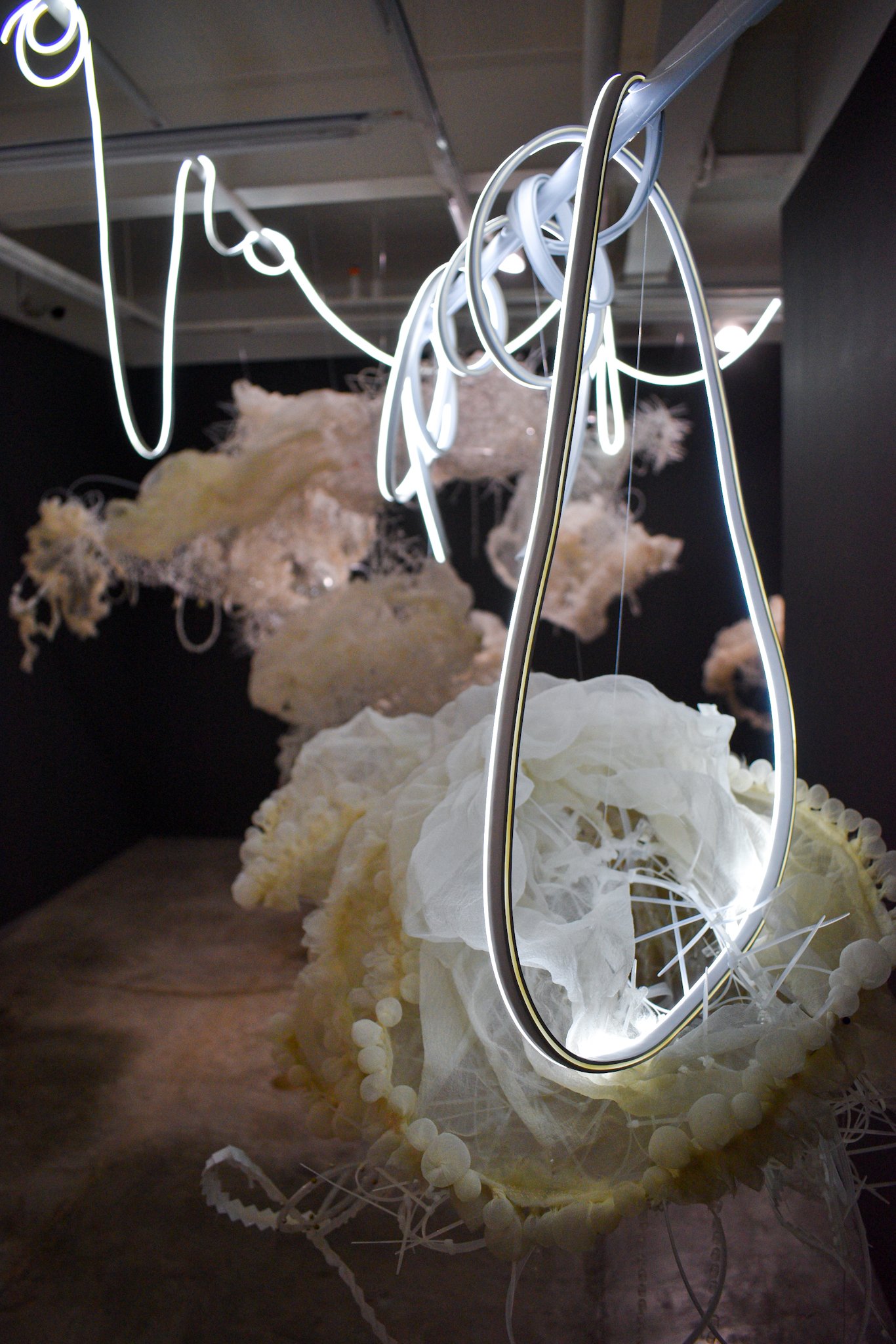






oh my joy we’re leaving tonight
West Gallery is proud to present Kelli Maeshiro’s “oh my joy we’re leaving tonight,” a mixed media installation exploring abstraction in terms of its formlessness or anti-form, its material deconstruction via process, producing meta-narratives about transitory states of being and sublime transformation, that allow metaphors of temporality and transport to come across like organic material, or atmospheric mass, guiding lights and transport vessels.
Maeshiro’s sculptural work here are composed like tissue formation or cellular membranes that flow, grow, and connect across its threshold. Incorporating a variety of materials that include but not limited to: organza, split-shot sinkers, monofilament, polystyrene plastics, pins, glass, wood, and plastic beads, zip ties, boning, hot-melt adhesive, pill capsules, artificial stamens, Sashiko thread, foam, steel pipes, cement, LED lighting, airline tubing, clips, acrylic paint, space blanket, and etc.; the work reveals the process of its manufacture, an apparent critique on the de-skilling of craft in postmodernist fashion, similar in approach by artists of process art or scatter art inclinations such as Barry Le Va, Polly Apfelbaum, or Sarah Sze. Maeshiro explains the use of various materials in her work:
“I’m unsure if the medium is important to the statement. But it’s just things I see that I feel I can draw within 3D-space. That is manipulated through cutting/destroying and reassembling into something new. I feel I have to manipulate the object to create a new meaning or to make something… surprising. Like the way you look at a painting up close and you figure out how someone made a stroke. Or a small object or writing contained in a painting that you only see up close. But maybe my manipulation of objects is very… innately Japanese. Because I feel they look nature oriented. But is that important? I think it might be because the installations are just works to exist with viewers. And I think the viewer needs something they can reference/relate to better look at works. Especially for something… that can be very abstract.”
Expanding beyond issues of its material origin undefined by the form it finally takes, there is a certain restraint attributed to having fixed content, like putting meaning to something, such as an identity or to a certain being-in-the-world or establishing an existential purpose, when there exists only growth: evolution. Taking off from the example of nature, organic tissues form from individual cells according to commonalities in their function, whether these group of cells would be capable of transmitting impulse signals, or have the ability to contract as muscles, able to carry oxygen, or even defend the body from disease intruders. These purposeful cells bind into tissues, and tissues functionally integrate to become bodily organs. The evolving process is indeed an abstraction from the full understanding of ourselves and our bodies, resisting thereby any given notion of supernatural spontaneous creation. The leap of faith by virtue of the absurd is a process of abstract thought. As a form of abstraction involving organic assembly, the artist’s work grows accordingly, to expand as an idea. The complexity in reading this as grouped material, in its formlessness, is akin to the experience we have in confronting a monumental painting of abstraction unforgiving in its expression against plain interpretations. That is, the work of art here presents itself as an open system with distinct expression that offers multivalent readings as long as immediate experience is somehow cleverly codified along with a perceptive critique of its genesis, asking: Where do we come from? What are we? Where are we going? (PG)
With poetic fitting, the work alludes to transference, transfiguration or transubstantiation, migration, and transitions. Hence its weightless quality, with a manifestation that embraces without stifling. The fabric membrane presents a gauzy translucence to its filmic surface, perceiving presence of things and apparent movement through the material, that allows the memory of time’s passage, like instances in a dream. The viewer is thus immersed within the installation, to activate the negative space within the overall space of the picture (i.e., painting), to make it come to life, with the static figure (as found in a painting) replaced instead by an active viewer, as intended by the artist. Furthermore, Maeshiro wanted the viewer to be swept away, to exist inside the work itself. The sculptural works therefore float like cloud-like formations, and hints at prior fantastic notions that they are more than clouds, but perhaps, are cloud-cities. That these can also be other means of transport, like a ship, a vessel, carrying or transferring information. Alluding thus to the significance of a boat, which in Norse mythology transmits its passengers from corporeal existence to a safe passage in the afterlife, a transfiguration of the everyday to the sublime, as meaningful data. Another note from the artist who hails from Hawaii, and to continue on the theme of migration, she shares the important role of the Hōkūle'a (as Hōkū or star and le’a meaning gladness or joy in Hawaiian), which is a guiding star for navigating the island chain of Hawaii. Thus, “Oh my joy, we’re leaving tonight” points to vital passages along connective links, networks and channels that we go through in everyday life. Some of these carriers or conduits turn into amicable agencies that become endearing, giving us joy whenever we encounter them, as they become our vessels if not guiding stars through the night. -Arvin Jason Flores, 2023